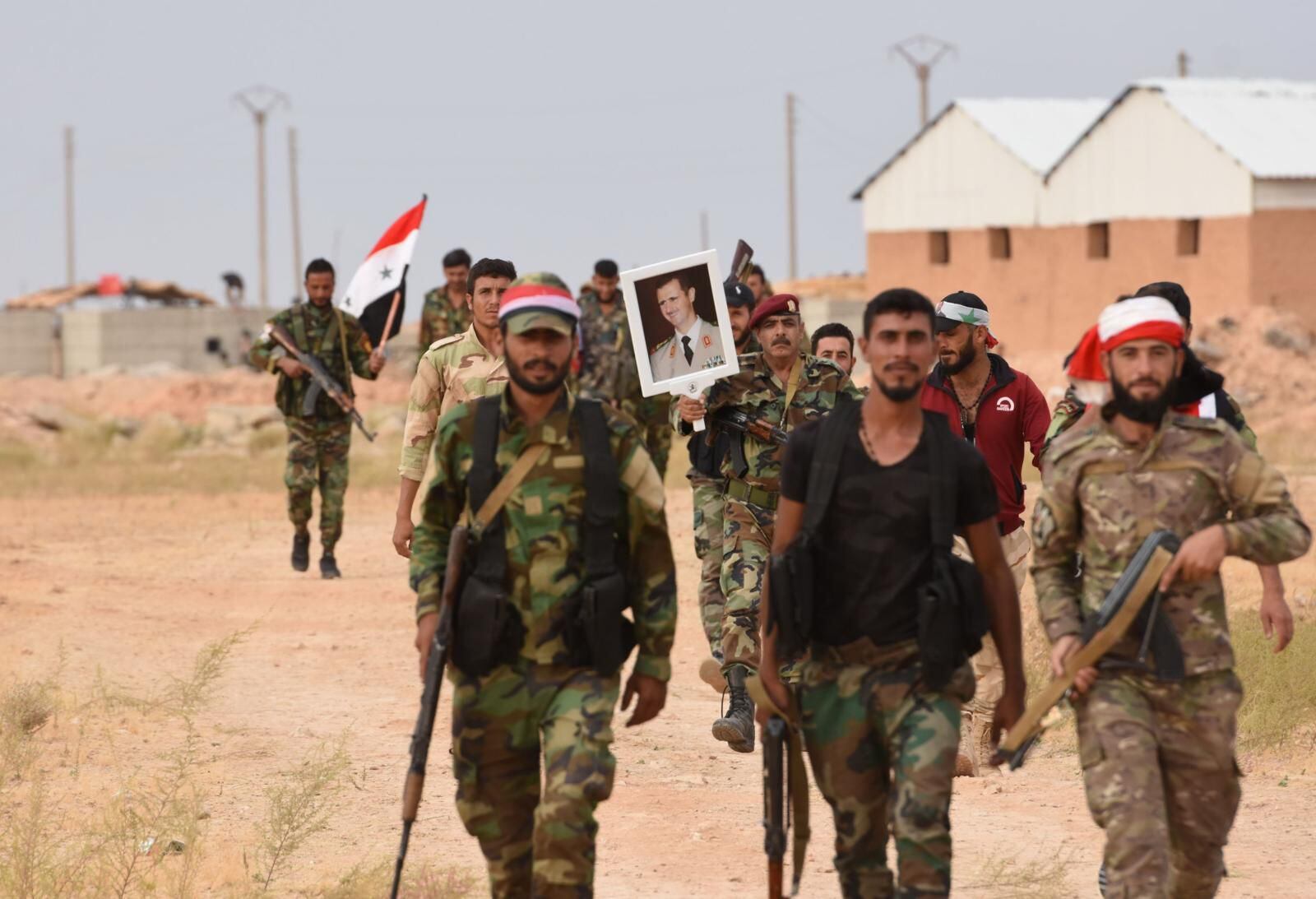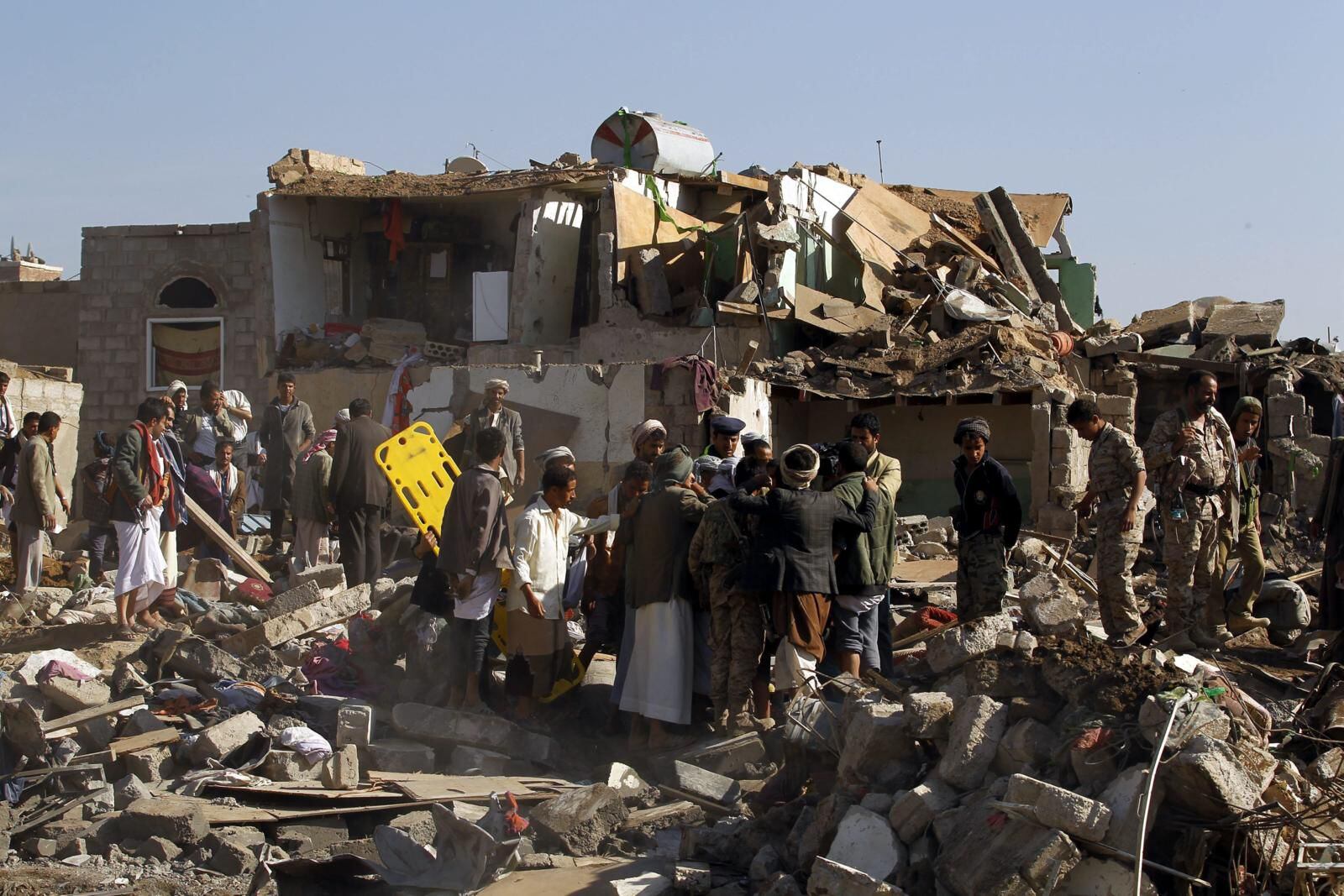The pandemic of COVID-19 It has garnered global attention for the past two years. The health emergency due to the disease that has already caused more than 5.4 million deaths on the planet has, at the same time, aggravated the economic and labor crisis in different latitudes. To this is added, in addition, a series of long-standing crises that put different nations on the ropes. The mixture of all these factors augurs a rather gloomy new year.
READ ALSO | The country that is preparing for its possible disappearance
In early December, the HIM-HER-IT published its global humanitarian outlook for 2022. The report estimates that some 274 million people will need protection and humanitarian assistance over the next year. The figure represents an increase from the 235 million people estimated for 2021.
Within this underprivileged group, United Nations It identifies a total of 183 million people as having the most urgent needs, and estimates that some $ 41 million in funding will be needed to serve them.
The head of humanitarian coordination of the HIM-HER-IT, Martin Griffiths, highlights within the same report that “conflicts, the climate crisis and disease”Will be the main detonators of these crises. Among its projections, one can find fear of the effects of famine in different countries and the increasingly devastating natural disasters, this last point would also lead to some 216 million people having to move within their own territories by 2050 .
The budget prepared by the HIM-HER-ITFurthermore, it reveals that the greatest needs for 2022 will focus mainly on Africa, the Middle East and Latin America.
MORE IN THE WORLD | Haiti: this is how the country lives its pain today a month after the devastating earthquake that left more than 2,000 dead
In this list we will review the situation in the countries that could experience the worst crises in the next year:
Haiti
The assassination of the president, a devastating earthquake, the impact of the COVID-19, an unusual strengthening of criminal gangs and several years of recurring crisis combine in Haiti, the small country of just 11 million inhabitants that seems to gather all the possible calamities in the world.
On July 7, President Jovenel Moïse was assassinated inside his residence in Port-au-Prince. Almost six months later, few details are known about the assassination. Although 44 suspects have been arrested and it was determined that a command was in charge of perpetrating the murder, those responsible for it have not yet been clear.
In 2022, Haiti One of its main objectives is to clarify the facts surrounding the death of Moïse and, in addition, to carry out always complicated elections to choose the new ruler.
LOOK | They use the last name on the hurricane list when the season is one month away.
A month and a half later, when the country had not yet come out of the shock of the assassination, a 7.2 magnitude earthquake killed 2,248 people and left another 690,000 homeless.
The earthquake was the strongest since the devastating January 2010 earthquake. In addition to the deaths, the economic impact was estimated in the loss of 15% of the Haitian GDP.
These factors, added to the crisis that the poorest country in America has been living with for years, have led to an unusual strengthening of armed criminal gangs in Port-au-Prince and other Haitian cities. The Human Rights Research Analysis Center recorded 1,002 kidnappings by these criminal groups during 2021.
The gangs have also focused their attention on fuel trucks, leading many drivers to refuse to work due to the constant threat to their lives. This, at the same time, put the country on the brink of shortages. The police have been unable to control the advance of criminal gangs and have limited themselves to escorting these vehicles.
As if that weren’t enough, the World Food Program of the HIM-HER-IT It estimates that 48% of its population suffers from hunger, access to drinking water is insufficient and the same happens with medical assistance.
In the country, only 1.06% of the population (123,595 inhabitants) has been vaccinated against the COVID-19, according to data from the Ministry of Health. A huge challenge in the nation will be convincing 76% of the population that they do not want to be inoculated, according to a survey by Safitek.
Afghanistan
One of the few issues that this year was able to break the dominance of the COVID-19 making headlines globally was the crisis in Afghanistan.
MORE INFORMATION | Bye, Covid ?: experts assure that “the omicron variant may be the light at the end of the tunnel” of the pandemic
Following the withdrawal of US troops from Afghan soil and the return to power of the Taliban, the Asian state has become a particularly threatening scenario for women.

This point will be decisive for the aspirations of the Taliban government to achieve international recognition, something that has not reached to date even from nations considered as allies, understand as Pakistan or China, for example.
In addition to the political chaos, the prolonged warlike conflict that preceded it has led to 95% of the Afghan population not having sufficient access to food, according to the World Food Program of the HIM-HER-IT. The global report presented by the United Nations indicates that within this group, some “24 million people need vital assistance to avoid a catastrophe”.
Putting aside the political crisis, the Asian country is facing the worst drought in 27 years. In the report of the Integrated Classification of Food Security in Phases presented in October of this year, it is warned that the famine worsened, affecting 37% more of the population compared to the one presented in April.
Furthermore, the shortage that started in November would last until March 2022.
As if that were not enough, another of the main threats to the Afghan population over the next year will be the Islamic State. The terrorist group, reduced after an international war campaign led by the United States and the European Union, is a fierce rival of the Taliban and since they returned to power they have already attacked in different parts of the country.
Syria
Over the past decade, Syria has been the scene of one of the greatest crises on the planet. Ten years after the start of the revolution against the regime of Bashar al-Asad, the dictator has not only managed to keep in power but a large part of the population, in addition, can only survive thanks to the humanitarian missions deployed in the area.
The World Food Program details on its website that at least 4,600 trucks of food assistance are required per month to help some 4.8 million people. This is without counting the missions that they must deploy in the most conflictive areas of the country, where it is often impossible for them to access.
In 2022, in addition, it is expected that the round of consultations between the regime of Al Asad and the rebels in the Astana process, which has the arbitration of Russia. Among the various issues addressed in the quest to put an end to the crisis, the concern over the reactivation of terrorist groups in Syrian territory stands out – as in the Afghan case.

Yemen
During his message included in the global panorama for 2022, Griffiths stressed that beyond thanking humanitarian missions what they really need is the commitment of the member states to continue functioning.
During 2021, the HIM-HER-IT managed to raise barely 46% of the budget presented to face the global challenges about which they had warned. The funds also arrived late, with only 20% of the money in May and receiving the bulk of income during the last quarter.
This type of situation has led to, for example, last Wednesday the World Food Program announcing that in January 2022 it will have to cut the food rations distributed to some 13 million people in this battered nation.
As if that were not enough, the war that has been going on for seven years in the country has caused great damage to the infrastructure yemeni being one of the most affected points the water plants. The UN reports that less than 55% of Yemenis have access to safe water, and of those, only 18% have connections to the public supply system that operates for just a few hours each month.

Ethiopia
In November 2020 the Government of Ethiopia and the Popular Front for the Liberation of Tigray They started a civil war in the African country. While both sides have announced a ceasefire this month, there are fears that the fragile peace will not be maintained through 2022.
To date, the conflict is estimated to have killed thousands of people, forcibly displaced more than 2 million people. ethiopians and aggravated the risk of famine in a large part of the population.

The civil war originated after the Popular Front for the Liberation of Tigray, which held power for decades in a period that brought great economic benefits to the country at the cost of scandalous human rights violations, threatened their autonomy. the 10 regions that make up the country. In response, they took up arms against the government of Abiy Ahmed, winner of the 2019 Nobel Peace Prize precisely for having grappled with the challenge. Ethiopian.
The government responded to this uprising by sending troops to the northern regions. Over time, it was revealed that the federal offensive brought serious human rights violations in the area; In addition, the Abiy government has restricted access to the press and ordered a communications blackout in the north of the country, according to a CNN report.
Added to that, in the fall Tigray experienced the worst locust invasion in decades, leading the region into a serious food insecurity emergency.
- New Year: The world welcomes 2022 in the midst of the rebound of the covid-19 pandemic
- Coronavirus cases in children soar in the United States after the arrival of omicron
- The paradisiac archipelago that resists the coronavirus and still does not register cases
- Why does Mexico, unlike the rest of the world, look relaxed at the omicron advance?
- British hospitals “on the warpath” against omicron
.

:quality(75)/cloudfront-us-east-1.images.arcpublishing.com/elcomercio/IK73VABX6RBBLLHS2BPHJJZIXY.jpg)

:quality(75)/cloudfront-us-east-1.images.arcpublishing.com/elcomercio/5QHXBF3WQFDJRAZZVWS3C6DV4M.jpg)
:quality(75)/cloudfront-us-east-1.images.arcpublishing.com/elcomercio/BUO6EJ5KRZHLFCS3FWMMF5HBPQ.jpg)
:quality(75)/cloudfront-us-east-1.images.arcpublishing.com/elcomercio/4XELV2MPRJBEFAQHHY3C43N2BY.jpg)
